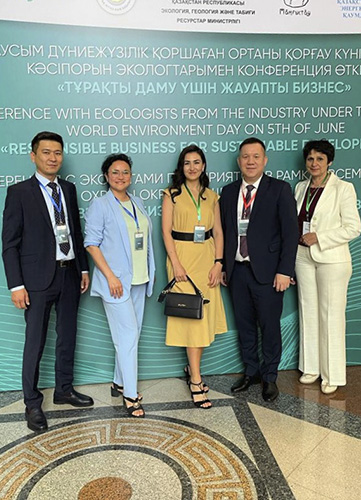ENVIRONMENTAL IMPACT
KPO is committed to minimizing its impact on the environment while developing the Karachaganak oil & gas condensate field.
KPO carries out its operations based on the principles of sustainable development and in compliance with high environmental standards observing the common human right for a favourable environment, as specified in the current Environmental Code of the Republic of Qazaqstan.
The key environmental commitments of the Company’s HSE Policy include the following significant impacts:
- prevention of the environmental pollution,
- reduction of GHG emissions,
- conservation of biodiversity and ecosystems,
- conservation of natural resources,
- continuous improvement of environmental performance.
As part of its environmental commitments, the Company applies state-of-the-art methods and world-class best available technologies.
The new Environmental Code of the Republic of Qazaqstan, which came into legal force on July 1, 2021, has brought many changes, including new approaches in environmental impact assessment, in obtaining an integrated environmental permit by the Operator, in introducing automated emission monitoring systems, application of the best available techniques allowing emissions fees’ exemption, the waste management system improvement and more. In 2022, KPO has adopted an Action Plan to implement the requirements of the new Environmental Code in its environmental activities.
As the Operator of the Karachaganak field, in line with the new Eco Code, KPO bears environmental responsibility for the emissions of contractors involved in activities at the Field. During 2021, the Company has put a lot of efforts on accounting for contractor emissions for inclusion in the Environmental Impact permit, eventually received at the end of 2021. Going forward, we are reviewing the environmental control workflows of contractors whose emissions are included in the overall permit.
Why is it important to us?
he Company has identified the following environmental aspects, which in the process of operation, have or may have a material impact on the environment:
- Air pollutants and GHG emissions;
- Leaks of gas, condensate, hydrocarbons and chemical substances;
- Industrial wastewater generation and disposal;
- Waste generation and handling;
- Illegal dumping and unauthorized waste disposal;
- Domestic wastewater treatment and discharge;
- Use of natural resources (water, energy, soil).
To reduce the risk levels for each of these aspects, KPO develops annual Environmental Protective Measures Plans.
During 2021, the Company has put a lot of efforts on accounting for contractor emissions for inclusion in the integrated emissions permit, eventually received at the end of 2021.
Transition to carbon neutrality

Addressing climate change is the biggest challenge that the world is facing today. The new Environmental Code of the Republic of Qazaqstan is aimed at stimulating the decarbonization of the country’s economy and “green” development.
In its turn, KPO works toward contributing to decarbonisation of the economy of Qazaqstan. In late 2021, KPO management has declared the launch of a Project 365 targeting to achieve a number of ambitious goals covering three areas: diversification and revenue growth, cost base management and the “green” transformation.
In September 2021, KPO held a seminar solely on green transition with engagement of its Parent Companies. As a result, a vision for the decarbonization of the Karachaganak Field was devised, which is to become one of the world’s biggest producers of hydrocarbons and energy with achieved carbon neutrality in scopes 1 and 2 by 2037. Furthermore, KPO has set a goal to develop a clear strategy of achieving carbon neutrality by end 2023 with definition of all interim steps for reducing GHG emissions.
Reduction of GHG emissions
In order to support the goal of reaching carbon neutrality (scopes 1 and 2) by 2037, the Company has initiated extensive work to study opportunities of reducing GHG emissions. In 2021, research studies were started to explore options, such as waste heat recovery, CO2 capture and storage, renewable energy supplies, participation in carbon trading, enhancement of energy efficiency, and other. The activities are ongoing with plans for expansion in 2022.
Addressing climate change is the biggest challenge that the world is facing today.
